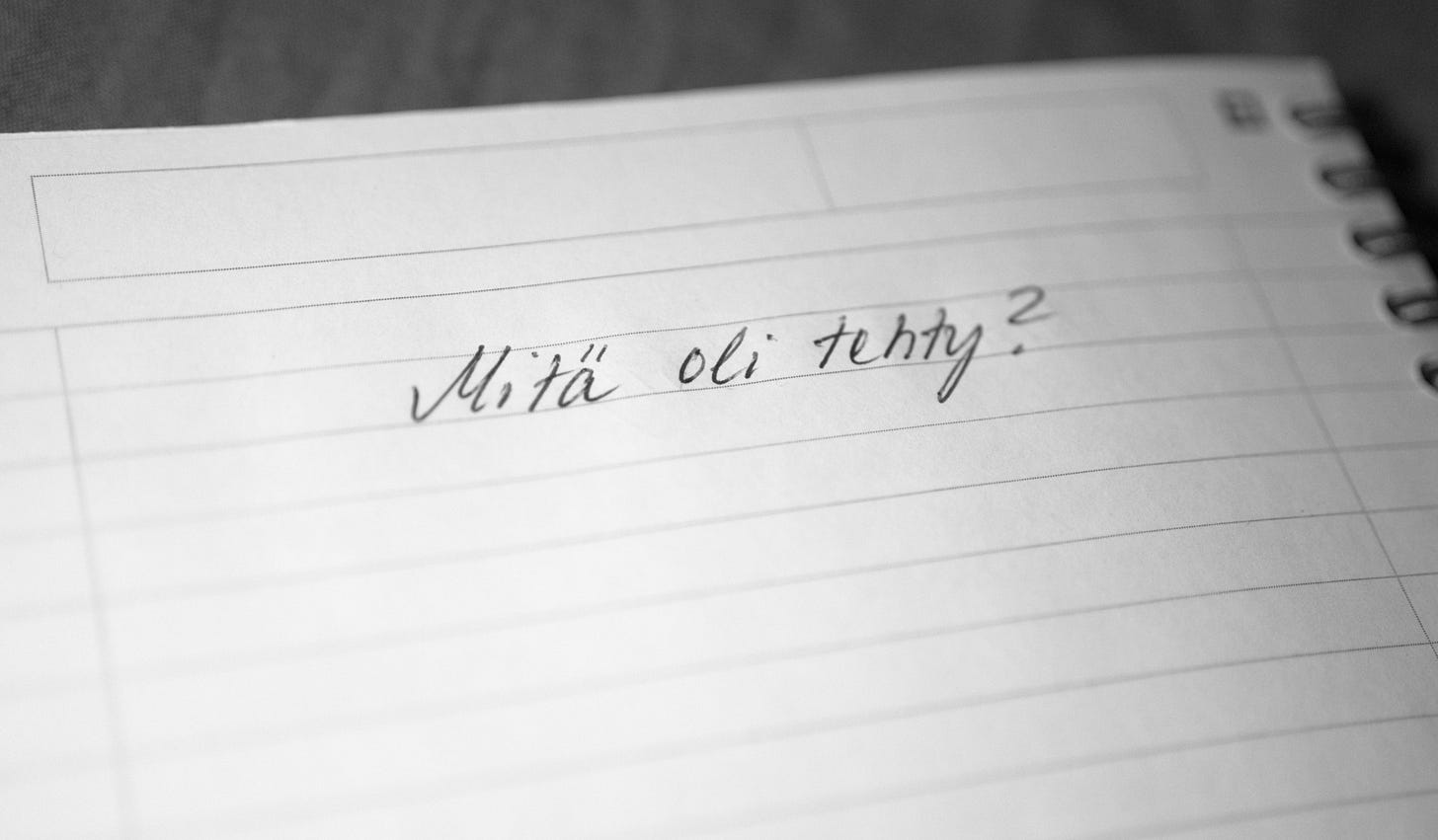Use of passive structure in present and past perfect: on tehty, oli tehty
A grammatical structure that also many native Finnish speakers occasionally struggle with is knowing the difference between the passive structure in present perfect and past perfect tenses compared to the active sentence counterparts. A passive structure in these tenses informs the reader that something has/had been done by an unknown agent. Because of this nature, in Finnish, the passive form doesn’t refer to the singularity or plurality of the object(s) but rather the anonymity and the manner of the performed action.
Let’s have some of these examples in passive form:
Nämä huonekalut on valmistettu kestämään aikaa. - These pieces of furniture have been made to withstand time.
Nämä seinät on juuri maalattu. - These walls have just been painted.
Kakku oli syöty jo eilen. - The cake had already been eaten yesterday.
Notice how regardless of the beginnings being in a singular or plural form, the sentences get the forms of on/oli tehty. Nämä huonekalut, nämä seinät and kakku act as objects because something has or had been done to them. The doer in these examples is unknown. The sentences get the Finnish passive past participle, the so called TU-partisiippi. As passive sentences in Finnish don’t have a subject in relationship to the mentioned object, all passive present perfects and past perfects get the form of on/oli + -tu/-ty/-ttu/-tty. In other words, only a subject can form congruence with the verb form in Finnish (singular vs plural verb form).
Let’s now make some active sentences with the same nouns and compare the differences:
Nämä huonekalut ovat puusta valmistettuja. - These pieces of furniture are made from wood.
Talon asukkaat ovat ihastelleet juuri maalattuja seiniä. - The residents of the house have been admiring the freshly painted walls.
He olivat syöneet kakun jo eilen. - They had already eaten the cake yesterday.
In the first active sentence nämä huonekalut now is a plural subject and is followed by the present third plural verb form ovat. The ending now is a predicate puusta valmistettuja, which gets a plural partitive case form valmistettuja to describe the plural subject nämä huonekalut in the active sentence. The plural partitive ending of the predicate in this context describes the uncountable quality of the subject: (wood in) pieces of furniture.
In the second active sentence talon asukkaat works now as a plural subject and gets accompanied by the present perfect third plural verb form ovat ihastelleet. Notice how now the present perfect gets ovat + -eet ending for plural. The ending object maalattuja seiniä gets a plural partitive form because the painted walls are now under the still ongoing and incomplete action by the described subject: residents of the house.
The third active sentence introduces the subject he. The following verb form is in third plural past perfect tense. As there is the subject he included, in this example it performs a complete action toward the mentioned object (cake) and therefore the object is set in accusative case kakun.
Wrapping up, the main area to focus on in these types of sentences is the role a subject brings to a Finnish sentence. A subject brings the aspect of singular vs plural verb form and can bring forward the relationship of subject to object. This relationship can bring some extra depth on what is described with the chosen noun cases.
–
Sources used as aid in writing this article and more on this topic:
Uusikielemme.fi: The Passive Past Participle – TU-partisiippi
Finnlectura.fi: Partisiipit
Kielikello.fi: Mitä vikaa on ilmauksessa ”ovat valittu”?




